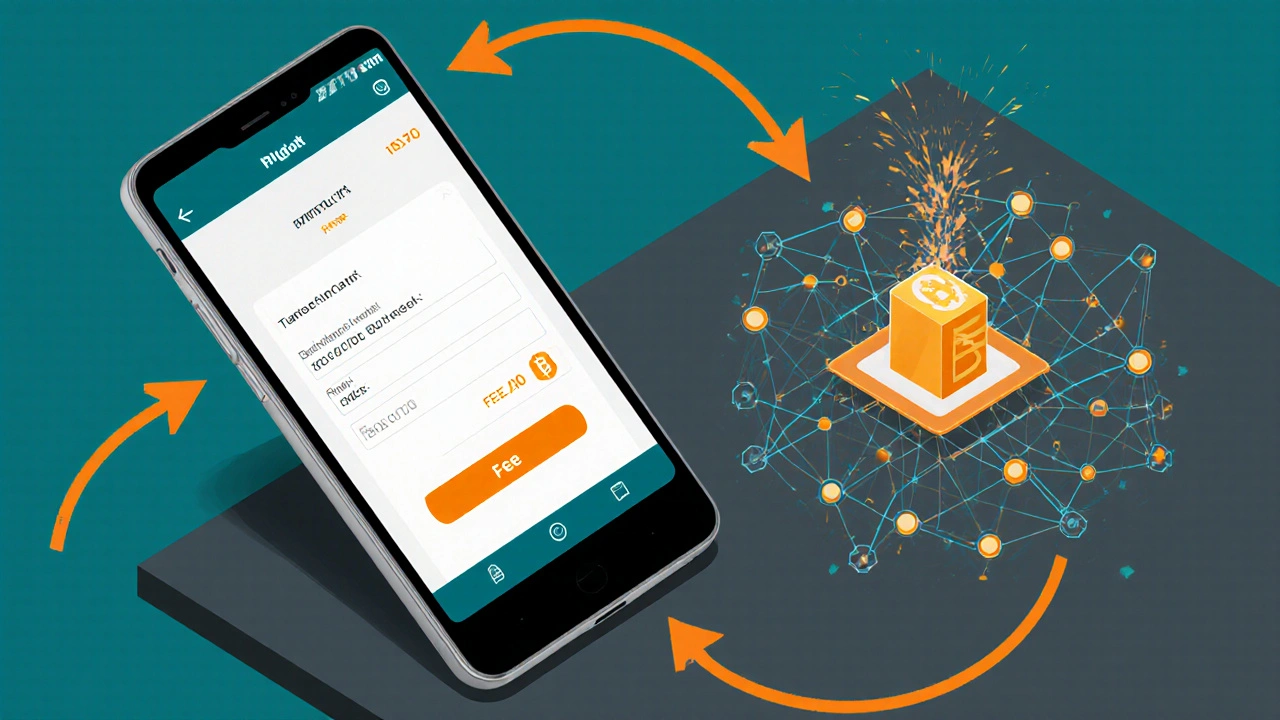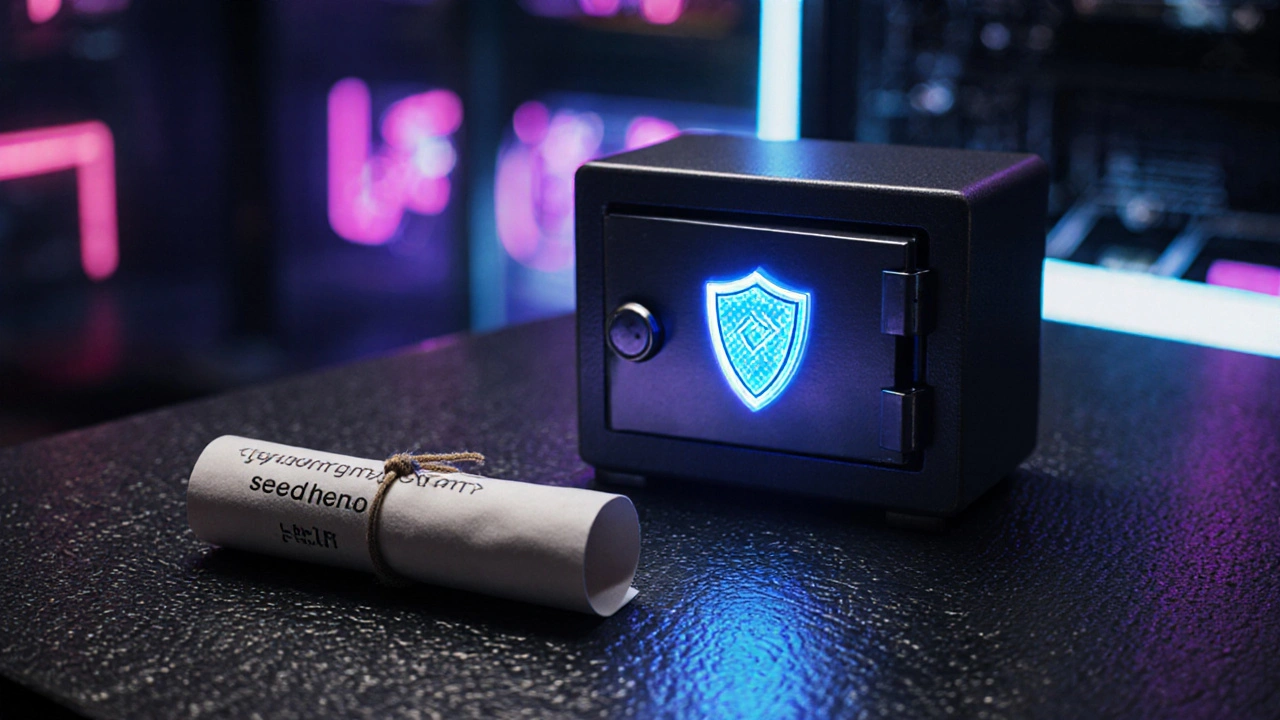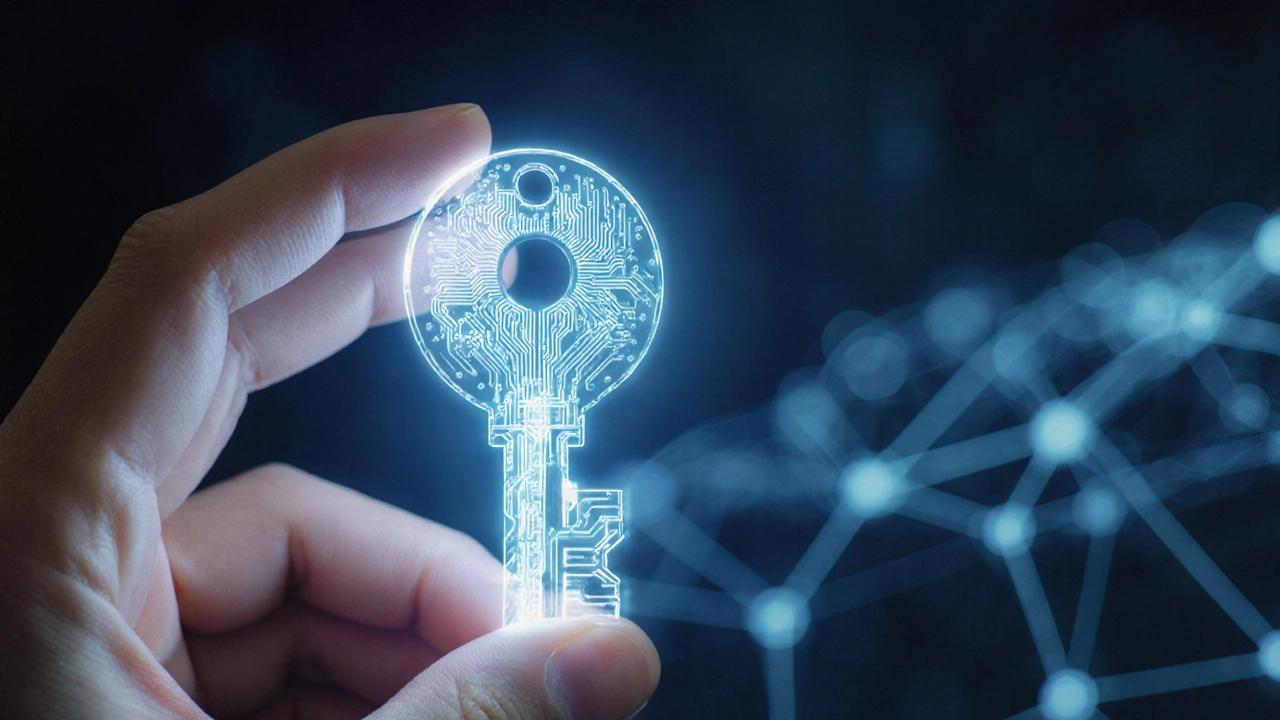Ever wondered what actually happens when you tap "send" in a crypto app? The magic isn’t a mysterious black box - it’s a set of well‑defined steps that turn your digital money into a secure, verifiable record on a blockchain. Below you’ll find a clear, step‑by‑step breakdown of how crypto wallets work, the pieces that make them tick, and what you should look out for to keep your assets safe.
What is a Crypto Wallet?
Crypto wallet is a software or hardware tool that stores the cryptographic keys you need to interact with a blockchain. It does not hold coins like a physical wallet holds cash; instead, it holds the credentials that let you prove ownership of digital assets recorded on a decentralized ledger.
Core Components: Keys, Addresses, and the Blockchain
The heart of any crypto wallet is the private key. This is a long, random number that should never be shared. It enables you to sign transactions, essentially telling the network, "I approve this movement of funds." From the private key, a public key is derived using elliptic‑curve cryptography. The public key is then compressed into a human‑readable address, which you can share with anyone who wants to send you crypto.
The blockchain itself is a distributed database where every transaction is recorded in blocks that link together cryptographically. When you send crypto, your wallet creates a signed transaction, broadcasts it to the network, and miners or validators add it to the next block.
How a Transaction Happens Inside a Wallet
- You enter the recipient’s address and the amount you want to send.
- The wallet builds a transaction object containing inputs (your unspent outputs), outputs (recipient address and change address), and a fee.
- Using your private key, the wallet generates a digital signature. This signature proves that you own the inputs without revealing the private key itself.
- The signed transaction is pushed to a node or directly to a peer‑to‑peer network.
- Validators/ miners verify the signature, confirm that the inputs haven’t been spent, and include the transaction in a new block.
- Once the block is added, the transaction is immutable and the recipient can see the funds at their address.
If any step fails - for example, the signature is invalid or the fee is too low - the network rejects the transaction and you’ll see an error in your wallet.

Types of Crypto Wallets
Not all wallets are created equal. Your choice depends on how often you trade, how much you care about convenience vs. security, and whether you prefer to control your keys yourself.
| Feature | Hardware Wallet | Software Wallet |
|---|---|---|
| Key storage | Offline (cold storage) | Online or on‑device (hot storage) |
| Security level | Very high - keys never leave device | Depends on device security and app reputation |
| Usability | Requires physical connection or Bluetooth | One‑click access via phone or browser |
| Cost | $50‑$200+ | Usually free or low‑cost |
| Best for | Long‑term holding, large balances | Daily trading, small amounts |
Other categories include mobile wallets (apps on smartphones), web wallets (hosted by a service), and custodial wallets (your keys are managed by an exchange). Each has trade‑offs between convenience and control.
Security Essentials: Seed Phrases, 2FA, and Cold Storage
The most common safety net is the seed phrase. When you set up a wallet, it generates a 12‑, 18‑, or 24‑word mnemonic that encodes all your private keys. Write it down on paper, store it in a safe, and never save it digitally where hackers could find it.
- Never share your seed phrase. Even a single word leaked can compromise all your assets.
- Enable two‑factor authentication (2FA) on any web or mobile wallet that supports it.
- Consider using a hardware wallet for “cold storage” - keeping the seed offline and the device unplugged when not in use.
- Regularly back up the seed phrase in multiple physical locations (e.g., a fire‑proof safe and a trusted family member).
Remember, the wallet is only as safe as the weakest link in your personal security chain.

Choosing the Right Wallet for Your Needs
Here’s a quick decision guide:
- Frequent trader? A reputable software wallet with built‑in exchange integration (e.g., Exodus, Trust Wallet) offers speed.
- Holding a large sum for the long term? Invest in a hardware wallet like Ledger or Trezor.
- Prefer simplicity and don’t mind a custodial service? Major exchanges (Coinbase, Binance) provide web wallets, but you give up key control.
- Need multi‑currency support? Look for wallets that list the tokens you own. Some hardware wallets also support DeFi apps via companion apps.
Whatever you pick, verify that the wallet’s code is open‑source or has undergone third‑party audits. A audited codebase reduces the risk of hidden backdoors.
Common Pitfalls and How to Avoid Them
Beginners often make avoidable mistakes. Spot the red flags before they bite:
- Phishing sites. Always check the URL, use bookmarks, and verify SSL certificates.
- Copy‑pasting addresses. Malware can replace clipboard content. Double‑check the first and last few characters.
- Sending to the wrong network. Sending an ERC‑20 token to a Bitcoin address irreversibly burns the funds.
- Ignoring transaction fees. Low fees can cause your transaction to sit pending for hours or be dropped.
- Storing seed phrases digitally. Cloud backups are vulnerable; use paper or metal backups instead.
By staying aware of these issues, you can protect your crypto much like you’d protect cash in a real wallet.
Frequently Asked Questions
What exactly does a crypto wallet store?
A crypto wallet stores the private keys (and sometimes the seed phrase) needed to sign transactions on a blockchain. It does not hold the coins themselves; the ledger does.
Can I recover my funds if I lose my hardware wallet?
Yes, as long as you have the original seed phrase. The phrase can regenerate all private keys on any compatible device.
Are custodial wallets safe?
Custodial wallets are convenient but you trust the service to keep your keys secure. History shows exchanges can be hacked or go insolvent, so only keep amounts you’re comfortable losing.
What is the difference between a seed phrase and a private key?
A private key is a single 256‑bit number that controls one address. A seed phrase is a human‑readable set of words that can generate many private keys using a deterministic algorithm (BIP‑39).
Do I need to pay fees every time I use a crypto wallet?
Yes. Each transaction you broadcast to the blockchain requires a miner/validator fee, which varies with network congestion and the chosen priority.


